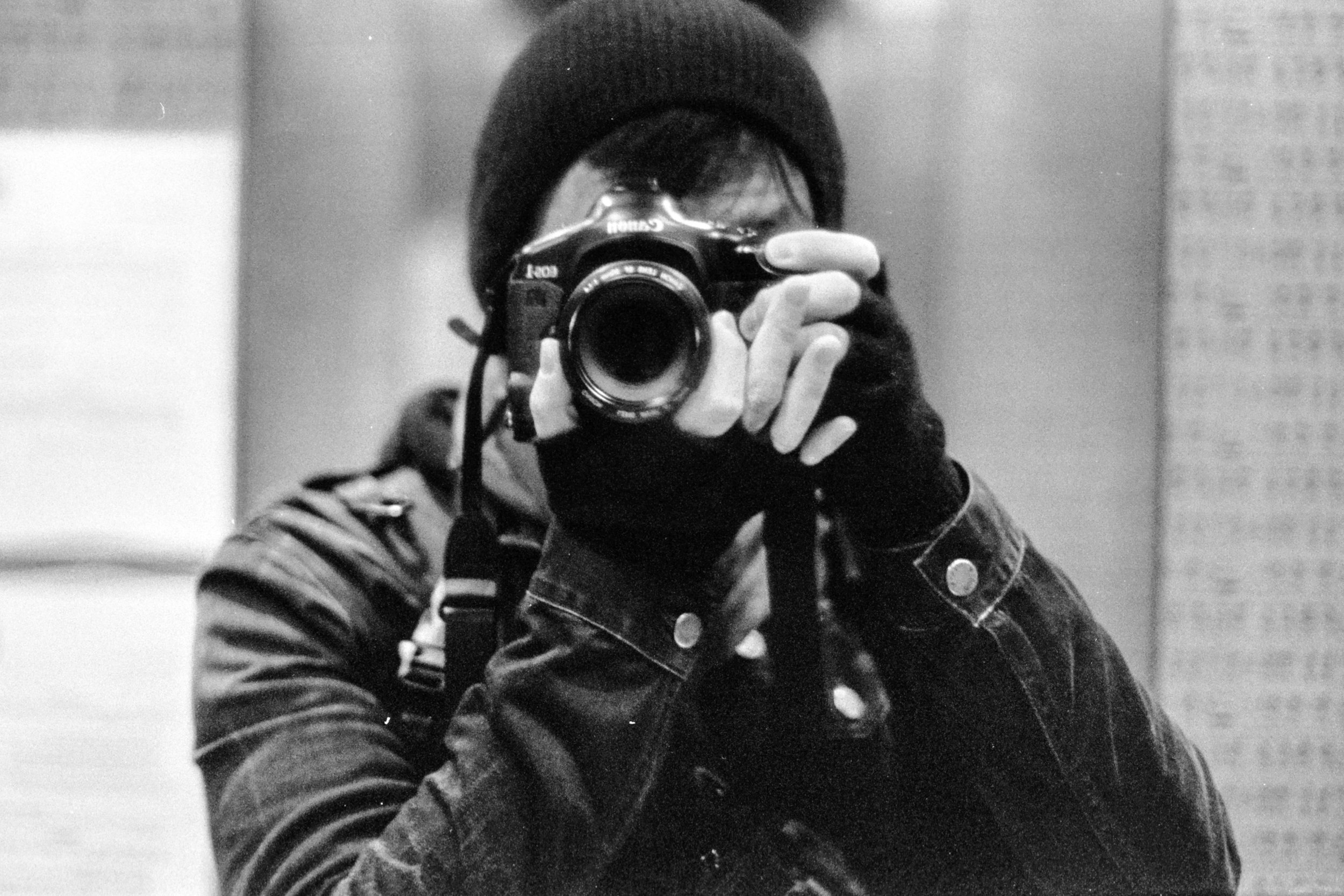How Digitizing Fuji Provia 400X + Velvia 100 with the Nikon Z6 Led Me to a Discovery
Four weeks ago, I finally received the Nikon Z6. And until last week, it was still inside the box. With this being a new year, it only made sense to start the blog’s season opener by taking it off the bench. So naturally, I dug up the box, opened it up, took the camera out for a quick practice drill, sighed, and then put it back inside the box again. Did you think I was going to review it? I’m already behind the curve with this camera. Besides, I had something urgent I needed to do. Only problem is, everyone was too busy to assist.
You’d think with a full roster, the blog would have enough talent in the bullpen. But sometimes, no amount of preparation is enough. Anna has been on the disabled list since November - or rather on loan - playing in the farm league across the Taiwan Strait. Meanwhile Lydia, who had just come back after a short absence from the game, had a prearranged commitment to fulfill. As for Judit, a morning engagement ran into extra innings, making any hopes of a double header effectively a technical rain out.
What is a major league blogger like myself to do? Reach deeper for relief? It was then I decided to get on the horn to call up a free agent. It was a shot out in left field, with me already falling behind in the count. But as luck would have it, Olga was within the ballpark of the neighborhood and surprisingly ready to start. Seriously, what are the odds? With daylight shorter this late in the season, and the lamps too dim for a night game, I was eager to play ball right away. After all, I needed to shoot slower speed film.
Leica MP-6 + Leica 35mm f/1.4 Summilux-M Aspherical + Fuji Provia 400X
Leica MP-6 + Leica 35mm f/1.4 Summilux-M Aspherical + Fuji Provia 400X
Leica MP-6 + Leica 35mm f/1.4 Summilux-M Aspherical + Fuji Provia 400X
Leica MP-6 + Leica 35mm f/1.4 Summilux-M Aspherical + Fuji Provia 400X
Leica MP-6 + Leica 35mm f/1.4 Summilux-M Aspherical + Fuji Provia 400X
Leica MP-6 + Leica 35mm f/1.4 Summilux-M Aspherical + Fuji Provia 400X
I was in a hurry for reasons that will become apparent later this year. But for the purposes of today’s blog entry, I want to discuss an issue that has become a constant source of annoyance to me. Ever since I shot the new Ektachrome E100, I’ve been somewhat unsatisfied with the results. Every image I’ve shared thus far has fallen short of even reaching the warning track. Given how I’ve struck out with Ektachrome, one can only conclude I’m a horrible photographer, or the film I was using was flawed.
Occam’s razor would suggest the former is the reason. But with hope springing eternal, I opted to believe the latter. The new Ektachrome must be flawed. It must be the film at fault. Ektachrome today is not the same film as Ektachrome of yore. It has a new formulation, I comforted myself. Because of that, I decided to embark on a quest to prove I wasn’t a horrible photographer to myself. With that being the case, logic insisted I undergo the due diligence to determine how I’d fare with other color reversal film.
Unfortunately, there aren’t many alternatives left in current production. In the last decade, film manufacturers have whittled down their offerings of color reversal film - with the loss of Kodachrome being the most notable casualty. Even so, I still managed to get my hands on a couple of rolls of soon to be expired color reversal film - including some Agfa CT Precisa 100 and some FujiFilm Velvia 100. Most recently, I even scored myself some FujiFilm Provia 400X - albeit expired for a period between eighteen to twenty-four months.
Leica MP-6 + Leica 35mm f/1.4 Summilux-M Aspherical + Fuji Provia 400X
Leica MP-6 + Leica 35mm f/1.4 Summilux-M Aspherical + Fuji Provia 400X
Leica MP-6 + Leica 35mm f/1.4 Summilux-M Aspherical + Fuji Provia 400X
Leica MP-6 + Leica 35mm f/1.4 Summilux-M Aspherical + Fuji Provia 400X
Leica MP-6 + Leica 35mm f/1.4 Summilux-M Aspherical + Fuji Provia 400X
Leica MP-6 + Leica 35mm f/1.4 Summilux-M Aspherical + Fuji Provia 400X
Having assembled a good supply of color reversal film, determining how I’d fare with them was the next order of business. I was eager to test out what I wanted to believe - in order to clear my good name - albeit only to myself. The way I figured it, if I can hit any of these other color reversal film out of the park, then it must mean that new Ektachrome is a shadow of its former or rather original self. But more importantly, it would also mean I’m not a horrible photographer - being the more important of the two findings.
So how did I do? Let’s just say I popped a blooper up in the infield. It was horrible. I was a horrible. From all the available evidence, from frame to frame, I could only surmise the worst. I mean, what ever happened to all the vivid colors? It’s suppose to be fabled, legendary dare I say. However, what I ended up getting from the Pakon F135 couldn’t be any further from what I expected. All the images I captured were deeply muted in saturation, with shadows noticeably muddy and highlights falling flat.
I was in despair over the resulting images. And just when I was about to lose all hope in myself, I had a Eureka or rather a déjà vu moment. Half a year ago, when I conducted a comparison of negative digitizing devices, I encountered the same findings with the Nikon ES-2 adapted on the Nikon Micro AF-S 60mm f/2.8G paired to the Nikon D850. The colors were all faded in saturation, with details lost in both the shadows and highlights - noticeably worse than scans from the Pakon F135 and Nikon Super Coolscan 9000 ED.
Leica MP-6 + Leica 35mm f/1.4 Summilux-M Aspherical + Fuji Provia 400X
Leica MP-6 + Leica 35mm f/1.4 Summilux-M Aspherical + Fuji Provia 400X
Leica MP-6 + Leica 35mm f/1.4 Summilux-M Aspherical + Fuji Provia 400X
Leica MP-6 + Leica 35mm f/1.4 Summilux-M Aspherical + Fuji Provia 400X
Leica MP-6 + Leica 35mm f/1.4 Summilux-M Aspherical + Fuji Provia 400X
Leica MP-6 + Leica 35mm f/1.4 Summilux-M Aspherical + Fuji Provia 400X
In doing the post mortem of that comparison, I concluded the Nikon ES-2 was ill suited for digitizing film. But what if I was wrong. What if the Nikon ES-2 was only ill suited for digitizing color negatives? It’s not as if the camera sensor of the Nikon D850 used in that comparison (or any other digital camera) is purpose made to scan negatives. They’re made to capture real life in color as oppose to converting the inverse of real life into real life colors. From that perspective, it makes sense that it shouldn’t be optimized for digitizing color negatives.
If that were the case, then the converse would also be true. In other words, traditional film digitizing devices, like the Pakon F135 (and presumably) the Nikon Coolscan 9000, are ill suited for digitizing color reversal film. Moreover, it would also mean that the Nikon ES-2 is not ill suited for digitizing color reversal film. In fact, the opposite should be true - that is to say - the Nikon ES-2 is actually better at digitizing color reversal film than traditional film digitizing devices, like the Pakon and the Nikon Coolscan.
Having connected the dots in loading the bases, I took out the Nikon Z6 from the dugout to see if I could hit one out of the park. Well, it was a grand slam. The digitized images of color reversal film on the Nikon Z6 with the Nikon ES-2 adapted on the Nikon Micro AF-S 60mm f/2.8G was on par with the digitized images of color negatives on the Pakon F135 or the Nikon Super Coolscan 9000 ED. It was a miracle. But more importantly, it meant I’m not a complete hack, and that new Ektachrome probably isn’t a dud.
Leica MP-6 + Leica 35mm f/1.4 Summilux-M Aspherical + Fuji Provia 400X
Leica MP-6 + Leica 35mm f/1.4 Summilux-M Aspherical + Fuji Provia 400X
Leica MP-6 + Leica 35mm f/1.4 Summilux-M Aspherical + Fuji Velvia 100
Leica MP-6 + Leica 35mm f/1.4 Summilux-M Aspherical + Fuji Velvia 100
Leica MP-6 + Leica 35mm f/1.4 Summilux-M Aspherical + Fuji Velvia 100
Leica MP-6 + Leica 35mm f/1.4 Summilux-M Aspherical + Fuji Velvia 100
Digitizing color reversal film on the Nikon Z6 makes so much sense. Unlike digitizing negatives on the Nikon D850, which can only save in jpeg after undergoing an in-camera conversion, digitizing color reversal film on the Nikon Z6 can be saved in raw NEF files. Moreover, with the benefit of mirrorless technology, the autofocus of the Nikon Z6 makes capturing the image on the color reversal film easy and effortless. I mean, it’s almost as if the Nikon Z6 was purpose made for digitizing color reversal film.
From my perspective, digitizing color reversal film may be the simplest way to render film capture as close to analog viewing as possible. For those who want to shoot film, but is wary of the digitizing process - in terms of time and quality of output, shooting color reversal film might be the best option for you. Plus, it also gives you an excuse to get a digital camera like the Nikon Z6. Although if you’re a pixel peeper, you might prefer the Nikon Z7 instead or even the Nikon D850, since they offer more resolution.
Still, the digitized images of color reversal film on the Nikon Z6 isn’t perfect. Strangely, it had too much pine tar on the bat, so to speak. In other words, it was too saturated in color. I actually had to tone down the colors by reducing both black and white values - which was a first for me. But oh how vivid the colors are. Finally, the fabled - and dare I say - legendary colors of these color reversal film can at long last be properly presented when digitized with the Nikon ES-2 on the Nikon Z mount camera.
Leica MP-6 + Leica 35mm f/1.4 Summilux-M Aspherical + Fuji Velvia 100
Leica MP-6 + Leica 35mm f/1.4 Summilux-M Aspherical + Fuji Velvia 100
Leica MP-6 + Leica 35mm f/1.4 Summilux-M Aspherical + Fuji Velvia 100
Leica MP-6 + Leica 35mm f/1.4 Summilux-M Aspherical + Fuji Velvia 100
Leica MP-6 + Leica 35mm f/1.4 Summilux-M Aspherical + Fuji Velvia 100
Leica MP-6 + Leica 35mm f/1.4 Summilux-M Aspherical + Fuji Velvia 100
All images were digitized on the Nikon Z6 + Nikon FTZ Adapter + Nikon AF-S Micro 60mm f/2.8G. All images have been “toned down” in Adobe Lightroom. Some images were cropped out of necessity from rushing on the digitization process… in other words, I wasn’t careful in the framing of one or two images. Color balance has not been edited. It would probably benefited from less magenta in tint.
Special thanks to Olga for helping out with such short notice.






